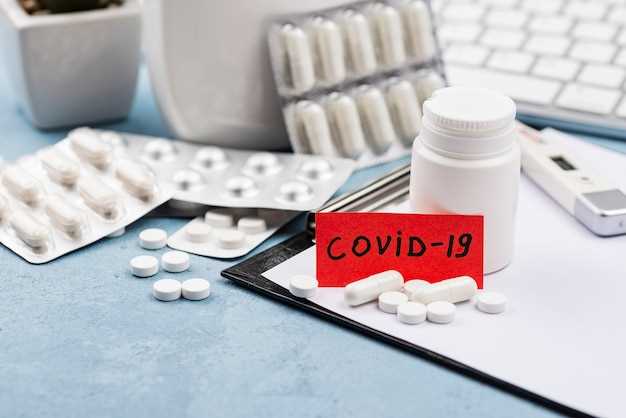
Unlock the potential of a dynamic combination that can enhance your well-being and vitality. Explore the powerful synergy of these two exceptional elements, each offering unique benefits that could transform your experience.
Discover the harmonious blend of potent elements that could revolutionize your approach to wellness. Experience the profound impact of this carefully curated fusion, designed to elevate your vitality and support your journey towards optimal health.
Understanding the Interaction between these Medications
When considering the combined effects of these pharmaceuticals, it’s essential to delve into the intricate interplay between them. Rather than mere coexistence, their interaction forms a dynamic synergy that can significantly impact the body’s response to pain and inflammation.
Exploring Mechanisms:
In exploring the synergy between these medications, it’s crucial to dissect the underlying mechanisms at play. While each substance operates distinctly, their combined administration elicits a response greater than the sum of their individual effects. Understanding how they complement and potentiate each other provides insight into their combined efficacy.
Pharmacological Synergy:
Examining the pharmacological synergy sheds light on how these medications interact at a molecular level. Their combined action may target multiple pathways involved in pain perception and inflammatory response, leading to enhanced therapeutic outcomes. This synergy underscores the importance of judiciously combining these medications under appropriate medical guidance.
Clinical Implications:
The clinical implications of this interaction extend beyond theoretical pharmacology. Studies and clinical observations elucidate the practical benefits of combining colchicine and diclofenac in managing conditions characterized by pain and inflammation. By understanding the nuances of this interaction, healthcare providers can optimize treatment strategies to maximize patient outcomes.
Exploring the Synergy
In this segment, we delve into the dynamic interplay between two potent therapeutic agents, unraveling the profound synergy that arises from their combined efficacy. Unlocking the potential of these substances in tandem unveils a realm of enhanced therapeutic benefits, fostering a symbiotic relationship that transcends the sum of its parts.
Unveiling Enhanced Therapeutic Benefits
Combining these pharmacological entities not only amplifies their individual efficacy but also unlocks a harmonious convergence, amplifying their respective therapeutic prowess. Through synergistic action, the benefits of utilizing these substances together extend beyond conventional expectations, offering a holistic approach to alleviating discomfort and promoting well-being.
Fostering Collaborative Efficacy
Exploring the synergy between these compounds unveils a collaborative efficacy that transcends their individual attributes. By harnessing their complementary mechanisms of action, this symbiotic relationship yields a formidable alliance against discomfort, paving the way for a more comprehensive approach to managing conditions where relief is paramount.
Benefits of Combining Colchicine and Diclofenac
In this section, we delve into the advantages of using these two medications synergistically to tackle pain and inflammation. When these substances are employed together, they offer a unique blend of therapeutic benefits that go beyond what either can achieve individually.
Enhanced Pain Relief
Combining these medications results in a potent synergy that amplifies their analgesic properties. By working in tandem, they provide more effective pain relief compared to using either one alone. This combined approach targets pain pathways from multiple angles, offering a more comprehensive solution.
This enhanced pain relief can be particularly beneficial for individuals experiencing moderate to severe discomfort due to various conditions, ranging from arthritis to acute injuries.
Furthermore, the synergy between these medications allows for lower doses of each, minimizing the risk of adverse effects associated with higher doses of a single medication.
Enhanced Pain Relief

When seeking relief from discomfort, it’s essential to explore solutions that not only alleviate the sensation but also amplify the overall sense of well-being. This section delves into the profound impact of combining two potent elements, fostering an environment where discomfort surrenders to comfort.
Maximizing Pain Alleviation
- Unlocking the potential for heightened pain relief through a strategic combination.
- Harmonizing the analgesic properties of these substances to create a more potent effect.
- Enhancing the body’s capacity to manage and mitigate discomfort, promoting a more comfortable existence.
Revitalizing Comfort
By synergizing the therapeutic qualities of these elements, individuals can experience a revitalization of comfort that transcends mere alleviation. The amalgamation of their effects creates a holistic approach to pain management, fostering a sense of well-being that permeates every facet of life.
Reduced Inflammation
In this section, we delve into the profound impact of combining these medications on mitigating inflammation, a fundamental aspect of various health conditions. By exploring the synergy between these compounds, we uncover their potential to alleviate inflammation more effectively when utilized together.
Understanding the intricacies of how these substances interact provides valuable insight into their combined efficacy in reducing inflammation. This collaborative effect holds promise for individuals seeking comprehensive relief from inflammatory discomfort.
- Enhanced Anti-Inflammatory Properties: The combination of these medications is believed to enhance their individual anti-inflammatory properties, resulting in a more potent and sustained reduction in inflammation.
- Targeted Relief: By targeting different pathways involved in the inflammatory response, the combined use of these medications offers a multifaceted approach to managing inflammation, potentially leading to more comprehensive relief.
- Improved Symptom Management: The ability of colchicine and diclofenac to synergistically address inflammation may contribute to more effective symptom management in conditions where inflammation plays a significant role.
It’s essential to consider various factors before combining these medications, including potential interactions, dosage adjustments, and monitoring for adverse effects. Consulting with your healthcare provider is paramount to ensuring safe and effective treatment tailored to your individual needs and medical history.
Considerations Before Combining These Medications
Before deciding to combine these two pharmaceuticals, it’s imperative to delve into the potential ramifications and considerations. Understanding the interaction between them is crucial for informed decision-making regarding your health.
Potential Risks and Complications

Combining these medications may pose certain risks and complications that warrant careful consideration. It’s essential to be aware of the potential side effects and adverse reactions that could arise from their concurrent usage.
| Potential Side Effects | Recommendations |
|---|---|
| Increased risk of gastrointestinal bleeding | Monitor closely for signs of bleeding such as black, tarry stools or vomiting blood. Seek immediate medical attention if any of these symptoms occur. |
| Renal impairment | Individuals with pre-existing kidney conditions should exercise caution and consult with a healthcare professional before combining these medications. |
| Elevated blood pressure | Regular monitoring of blood pressure is advised, especially for individuals with hypertension or cardiovascular issues. |
| Increased risk of cardiovascular events | Patients with a history of heart disease or stroke should discuss the potential risks with their healthcare provider before initiating concurrent treatment. |
It’s crucial to prioritize safety and efficacy when considering the combined use of these medications. Consulting with a healthcare provider is paramount to ensure personalized guidance and supervision throughout the treatment process.
Potential Adverse Reactions
When considering the confluence of these medications, it’s essential to delve into the potential side effects that may arise from their combination. Understanding the possible adverse reactions is crucial for informed decision-making regarding your health.
- Increased Risk of Gastrointestinal Complications: The simultaneous use of these medications may heighten the susceptibility to gastrointestinal issues such as ulcers, bleeding, or perforation.
- Elevated Blood Pressure: There exists a likelihood of an elevation in blood pressure levels, which can pose risks particularly to individuals with pre-existing hypertension.
- Renal Impairment: Combination therapy might exacerbate renal impairment or lead to new-onset kidney problems, necessitating cautious monitoring.
- Allergic Reactions: Individuals may manifest allergic responses to either of the medications or to their combination, ranging from mild rashes to severe anaphylactic reactions.
It’s imperative to acknowledge these potential side effects and to discuss any concerns or pre-existing conditions with your healthcare provider before initiating or altering any medication regimen. Your healthcare provider can offer personalized guidance tailored to your specific medical history and needs.

